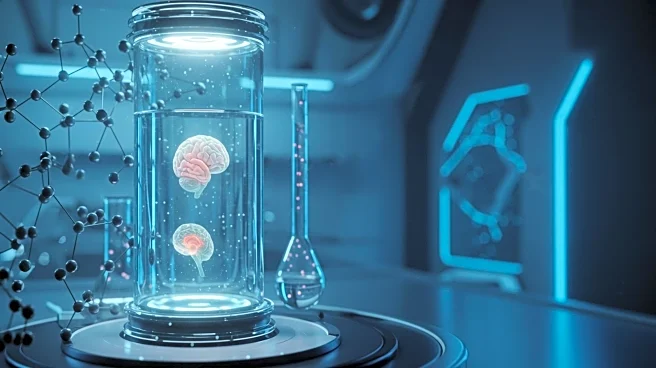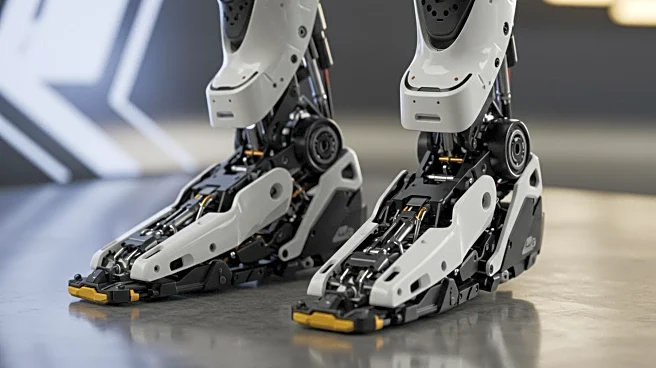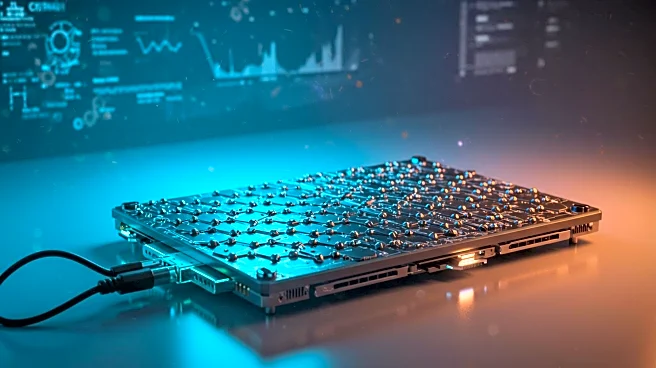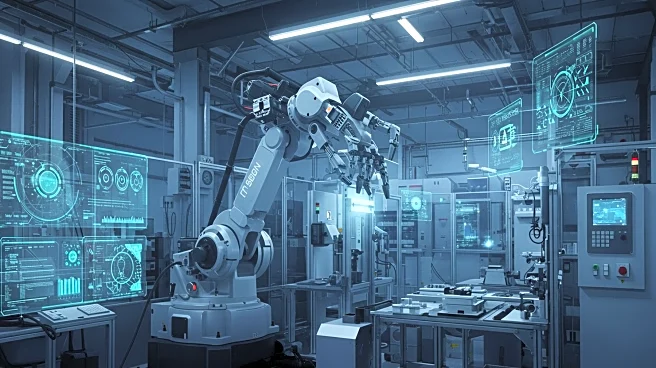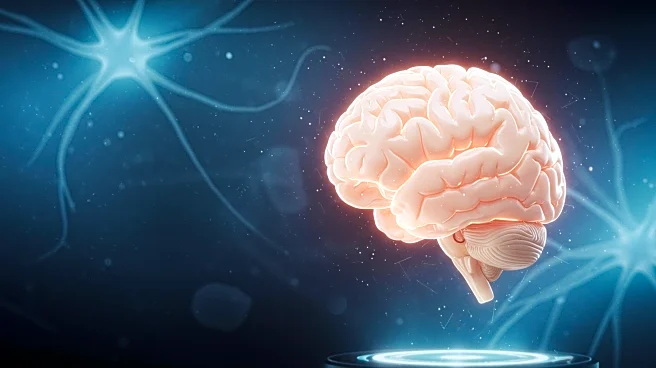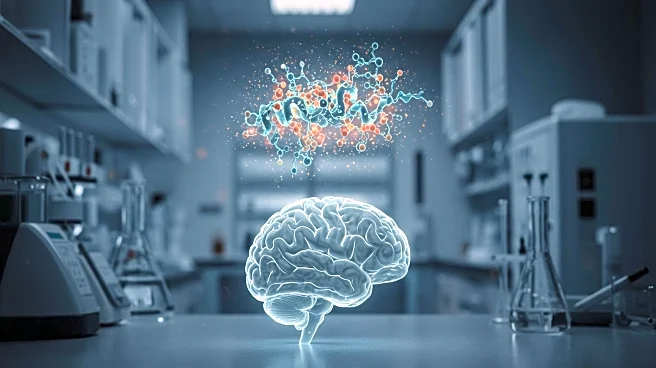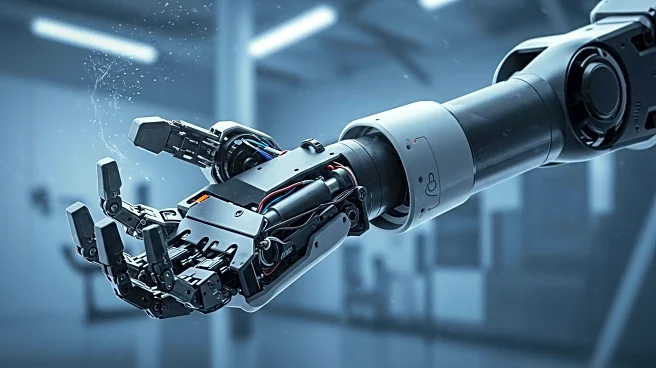What's Happening?
Researchers at the University of California San Diego, in collaboration with NeurANO Bioscience and Nanotools Bioscience, have developed a novel method using graphene to stimulate and mature human brain organoids. This method, known as Graphene-Mediated Optical Stimulation (GraMOS), leverages graphene's optoelectronic properties to convert light into electrical cues, encouraging neurons to connect and communicate without genetic modification or invasive techniques. This advancement is significant for modeling age-related conditions like Alzheimer's disease and allows brain organoids to control robotic devices in real-time. The study highlights the potential of GraMOS to accelerate brain organoid development, offering a safer and biocompatible alternative to traditional methods.
Why It's Important?
The development of GraMOS represents a significant breakthrough in neuroscience and neuroengineering. By accelerating the maturation of brain organoids, researchers can study neurological diseases more effectively and in a timely manner. This method could revolutionize drug testing and provide new insights into diseases like Alzheimer's, potentially leading to more effective treatments. Additionally, the ability to integrate brain organoids with robotic systems opens new avenues for advanced prosthetics and adaptive interfaces, enhancing the interaction between living neural tissue and technology. This could lead to significant advancements in AI applications, offering improved problem-solving capabilities and reliability.
What's Next?
The successful implementation of GraMOS could lead to further research into its applications in tissue engineering and the development of neuro-biohybrid systems. Researchers may explore how this technology can be adapted to stimulate other types of lab-grown tissues, potentially transforming the field of regenerative medicine. The integration of living neural networks with machines could also pave the way for new forms of computation and AI, with potential applications in various industries. Continued research and development in this area could redefine the possibilities in neuroscience and technology, leading to innovative solutions for complex challenges.
Beyond the Headlines
The use of graphene in neuroengineering not only accelerates brain organoid development but also raises ethical and legal considerations regarding the integration of living tissues with machines. As this technology advances, it will be crucial to address potential implications for privacy, consent, and the ethical treatment of biohybrid systems. Additionally, the long-term impact of such technologies on society and the economy will need to be carefully evaluated to ensure responsible and equitable development.


